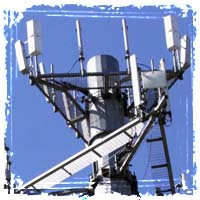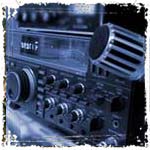As part of our infrastructure series, we are going to take a look at our country’s communications infrastructure.
Who is Listening?
Let’s face it; every time we talk or transmit messages through our modern communications infrastructure, we put ourselves at risk. From bored teenage hackers, to more sophisticated criminal groups, hundreds of thousands of hackers are hard at work trying to steal every piece of data they can get their hands on.
If you use one of these modern forms of communication, (cell phones, the internet, email, etc…) there’s a good chance that your information will eventually become compromised.
The technology is out there, and it’s getting easier for criminals to use it.
 At a security conference a couple years back, a group of hackers showed how easily they could intercept just about anyone’s cell phone conversations.
At a security conference a couple years back, a group of hackers showed how easily they could intercept just about anyone’s cell phone conversations.With under $1,500 worth of gear, the security expert built a device that mimicked
During the demonstration, the security expert was able to get 30 phones from people in the audience, to actually connect to his simulated tower.
Government is
Based on recent events, we can now say with absolute certainty that our communication channels are anything but secure. It’s very likely that everything you say, or send, is in some way being monitored or fed into a massive government database.
What was once considered the paranoid thoughts of conspiracy theorists, has now been confirmed: The government is monitoring everything.
During a Disaster, Can you really count on modern forms of Communication?
Time and time again, we see just how vulnerable we are to even small scale disasters. From cell towers being taken offline by relatively small storms, to cell networks becoming completely overwhelmed during national tragedies, it’s pretty obvious our systems are not built to deal with emergencies.
Most Americans have become way too reliant on their cell phones, and many don’t realize how ineffective they will likely be during a disaster. In fact, during the summer of 2012 a series of storms swept through the mid-Atlantic region of the U.S. causing widespread damage to the cellular infrastructure.
During these disasters, millions of people were unable to use their cellphones, access the internet, or even dial 911. The problem was so bad that parts of Northern Virginia went without emergency 911 services for over 48 hours.
If our cell providers can’t even guarantee service during normal yearly storms, what do you think will happen during a major nationwide disaster?
You have to have a backup plan
During any type of emergency, communications is usually one of the most important survival skills that you can possess. When modern communication lines go down, you need to have
Large Scale Threats to the System:
Now that we have natural disasters covered, the next step is to prepare for large scale threats.
Cyber Threat: The cyber threat is real, and it’s so much larger than them just listening to our calls.
Our modern communication infrastructure is incredibly reliant on the grid; this reliance has made us incredibly vulnerable to attacks. Earlier this year, hackers launched one of the largest DDOS attacks in the history of the internet.
The attack caused widespread internet congestion, and jammed critical infrastructure around the world. The attack showed how quickly, and easily, hackers could cripple our communication systems.
In a matter of hours, a large scale coordinated attack could literally cripple the country.
EMP Threat: Just like our electrical grid, our communications infrastructure is incredibly vulnerable to electromagnetic pulse (EMP) attacks.
Recently, after North Korea threatened the U.S. with a nuclear attack, the threat on an EMP being detonated over our skies has become even more of a concern. If North Korea, or any rouge nation were able to detonate an EMP, it would change our country in an instant.
Our entire power grid would instantly go down, making every form of modern communication completely useless in a matter of seconds. Our cell towers, radios, telephones and internet systems would all stop working.
In the blink of an eye, the way we communicate and gather information would instantly change.
Contingency Planning:
When the power lines go down, and modern communication becomes completely unreliable, there is one form of commutation that will probably still be alive and well – Ham Radio.
Although there are many people who are leery of becoming a licensed Amateur Radio operator – and I really don’t blame them after all the recent government spy scandals – I do believe the benefits outweigh the risks. I mean let’s face it, they probably have more information on those that use cell phones, than those who become licensed Hams.
Why Ham Radio?
 In
my opinion, Ham Radio in probably one of the most viable forms of
communication during a crisis situation. During the initial stages of a
disaster, Ham Radio operators are often the only line of communication
into or out of the affected area.
In
my opinion, Ham Radio in probably one of the most viable forms of
communication during a crisis situation. During the initial stages of a
disaster, Ham Radio operators are often the only line of communication
into or out of the affected area.If your serious about emergency communications, I advise reading one of our many articles on Ham Radio.
In a survival situation, knowledge is going to be a critical factor in determining the outcome of your situation. Don’t underestimate the power of communication, and the importance of staying informed.
No comments:
Post a Comment